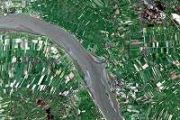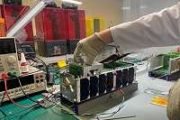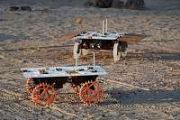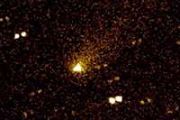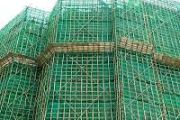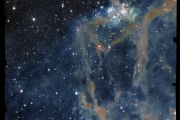
Copernical Team
MOXIE sets consecutive personal bests and Mars records for oxygen production
 Perseverance has a unique device near its heart that inhales Mars' atmosphere and exhales pure oxygen. This device is named MOXIE, the Mars Oxygen In Situ Resource Utilization Experiment.
The toaster-sized MOXIE uses a high-temperature, electrochemical process called solid oxide electrolysis to strip oxygen ions from the carbon dioxide in the atmosphere of Mars. There are two little gas ex
Perseverance has a unique device near its heart that inhales Mars' atmosphere and exhales pure oxygen. This device is named MOXIE, the Mars Oxygen In Situ Resource Utilization Experiment.
The toaster-sized MOXIE uses a high-temperature, electrochemical process called solid oxide electrolysis to strip oxygen ions from the carbon dioxide in the atmosphere of Mars. There are two little gas ex The 10 Days of Christmas: Sols 3689-3698
 On the first sol of Christmas, Curiosity will bring to us; one APXS analysis, one ChemCam analysis and a multitude of Mastcam, MAHLI and RMI images! On the second sol of Christmas, Curiosity will bring to us; more ChemCam RMI images, more Mastcam images, more Navcam images and drive to a new, exciting location.
To allow for the MSL science team and engineers to take some time off over the
On the first sol of Christmas, Curiosity will bring to us; one APXS analysis, one ChemCam analysis and a multitude of Mastcam, MAHLI and RMI images! On the second sol of Christmas, Curiosity will bring to us; more ChemCam RMI images, more Mastcam images, more Navcam images and drive to a new, exciting location.
To allow for the MSL science team and engineers to take some time off over the Martian winter wonderland across Ultimi Scopuli
 Christmas and winter spirit - also on Mars. Impact craters connected by a striped, coloured ribbon can be seen in the final and very wintry HRSC Mars image of this year. We wish all readers of our martian image series, published together with the European Space Agency (ESA) and Freie Universitat Berlin, happy holidays!
Image data from the High Resolution Stereo Camera (HRSC) on board ESA's
Christmas and winter spirit - also on Mars. Impact craters connected by a striped, coloured ribbon can be seen in the final and very wintry HRSC Mars image of this year. We wish all readers of our martian image series, published together with the European Space Agency (ESA) and Freie Universitat Berlin, happy holidays!
Image data from the High Resolution Stereo Camera (HRSC) on board ESA's Inauguration of mainland Europe's first satellite launch complex
 On 13 January 2023, the Swedish head of state, King Carl XVI Gustaf, together with European and Swedish political dignitaries will visit Esrange Space Center in northern Sweden to cut the ribbon of a new spaceport that will significantly reshape the European space landscape. After years of preparation and construction, European mainland's first orbital launch complex, Spaceport Esrange, will be
On 13 January 2023, the Swedish head of state, King Carl XVI Gustaf, together with European and Swedish political dignitaries will visit Esrange Space Center in northern Sweden to cut the ribbon of a new spaceport that will significantly reshape the European space landscape. After years of preparation and construction, European mainland's first orbital launch complex, Spaceport Esrange, will be Virgin Orbit' Launcherone Systems given green light for upcoming mission
 The U.K. Civil Aviation Authority has issued launch and range control licenses to Virgin Orbit (Nasdaq: VORB) to undertake the first satellite launch from UK soil. The granting of these licenses represents a major step forward for the historic Start Me Up mission, and reflects the CAA's concurrence that all reasonable steps have been taken by Virgin Orbit to ensure the desired safety, security,
The U.K. Civil Aviation Authority has issued launch and range control licenses to Virgin Orbit (Nasdaq: VORB) to undertake the first satellite launch from UK soil. The granting of these licenses represents a major step forward for the historic Start Me Up mission, and reflects the CAA's concurrence that all reasonable steps have been taken by Virgin Orbit to ensure the desired safety, security, Three time dimensions, one space dimension
 How would our world be viewed by observers moving faster than light in a vacuum? Such a picture would be clearly different from what we encounter every day. We should expect to see not only phenomena that happen spontaneously, without a deterministic cause, but also particles traveling simultaneously along multiple paths - argue theorists from universities in Warsaw and Oxford.
Also the ve
How would our world be viewed by observers moving faster than light in a vacuum? Such a picture would be clearly different from what we encounter every day. We should expect to see not only phenomena that happen spontaneously, without a deterministic cause, but also particles traveling simultaneously along multiple paths - argue theorists from universities in Warsaw and Oxford.
Also the ve New study models the transmission of foreshock waves towards Earth
 An international team of scientists led by Lucile Turc, an Academy Research Fellow at the University of Helsinki and supported by the International Space Science Institute in Bern has studied the propagation of electromagnetic waves in near-Earth space for three years. The team has studied the waves in the area where the solar wind collides with Earth's magnetic field called foreshock region, an
An international team of scientists led by Lucile Turc, an Academy Research Fellow at the University of Helsinki and supported by the International Space Science Institute in Bern has studied the propagation of electromagnetic waves in near-Earth space for three years. The team has studied the waves in the area where the solar wind collides with Earth's magnetic field called foreshock region, an New technique reveals changing shapes of magnetic noise in space and time
 Electromagnetic noise poses a major problem for communications, prompting wireless carriers to invest heavily in technologies to overcome it. But for a team of scientists exploring the atomic realm, measuring tiny fluctuations in noise could hold the key to discovery.
"Noise is usually thought of as a nuisance, but physicists can learn many things by studying noise," said Nathalie de Leon,
Electromagnetic noise poses a major problem for communications, prompting wireless carriers to invest heavily in technologies to overcome it. But for a team of scientists exploring the atomic realm, measuring tiny fluctuations in noise could hold the key to discovery.
"Noise is usually thought of as a nuisance, but physicists can learn many things by studying noise," said Nathalie de Leon, Moon water imager integrated with NASA's Lunar Trailblazer
 JPL's cutting-edge instrument, which will provide insights into the lunar water cycle and composition of the Moon's surface, has been incorporated into the small satellite. Lunar Trailblazer, NASA's mission to understand lunar water and the Moon's water cycle led by Caltech in Pasadena, California, is one step closer to launching next year. Earlier this month, the agency's Jet Propulsion Laborat
JPL's cutting-edge instrument, which will provide insights into the lunar water cycle and composition of the Moon's surface, has been incorporated into the small satellite. Lunar Trailblazer, NASA's mission to understand lunar water and the Moon's water cycle led by Caltech in Pasadena, California, is one step closer to launching next year. Earlier this month, the agency's Jet Propulsion Laborat HAARP to bounce signal off asteroid in NASA experiment
 An experiment to bounce a radio signal off an asteroid on Dec. 27 will serve as a test for probing a larger asteroid that in 2029 will pass closer to Earth than the many geostationary satellites that orbit our planet.
The High-frequency Active Auroral Research Program research site in Gakona will transmit radio signals to asteroid 2010 XC15, which could be about 500 feet across. The Univer
An experiment to bounce a radio signal off an asteroid on Dec. 27 will serve as a test for probing a larger asteroid that in 2029 will pass closer to Earth than the many geostationary satellites that orbit our planet.
The High-frequency Active Auroral Research Program research site in Gakona will transmit radio signals to asteroid 2010 XC15, which could be about 500 feet across. The Univer 










